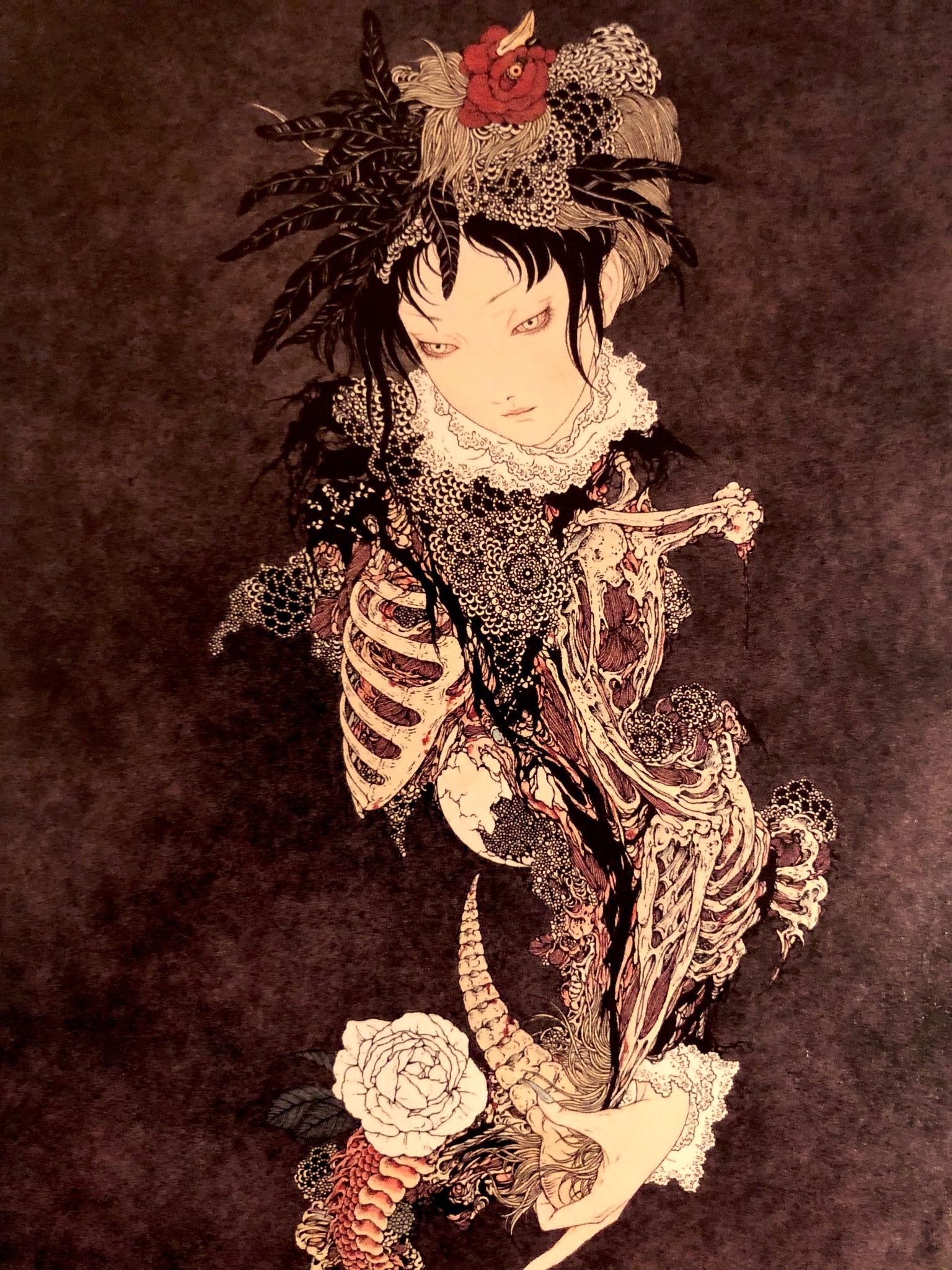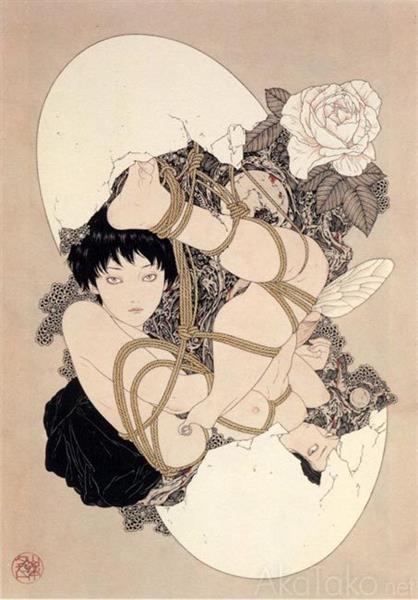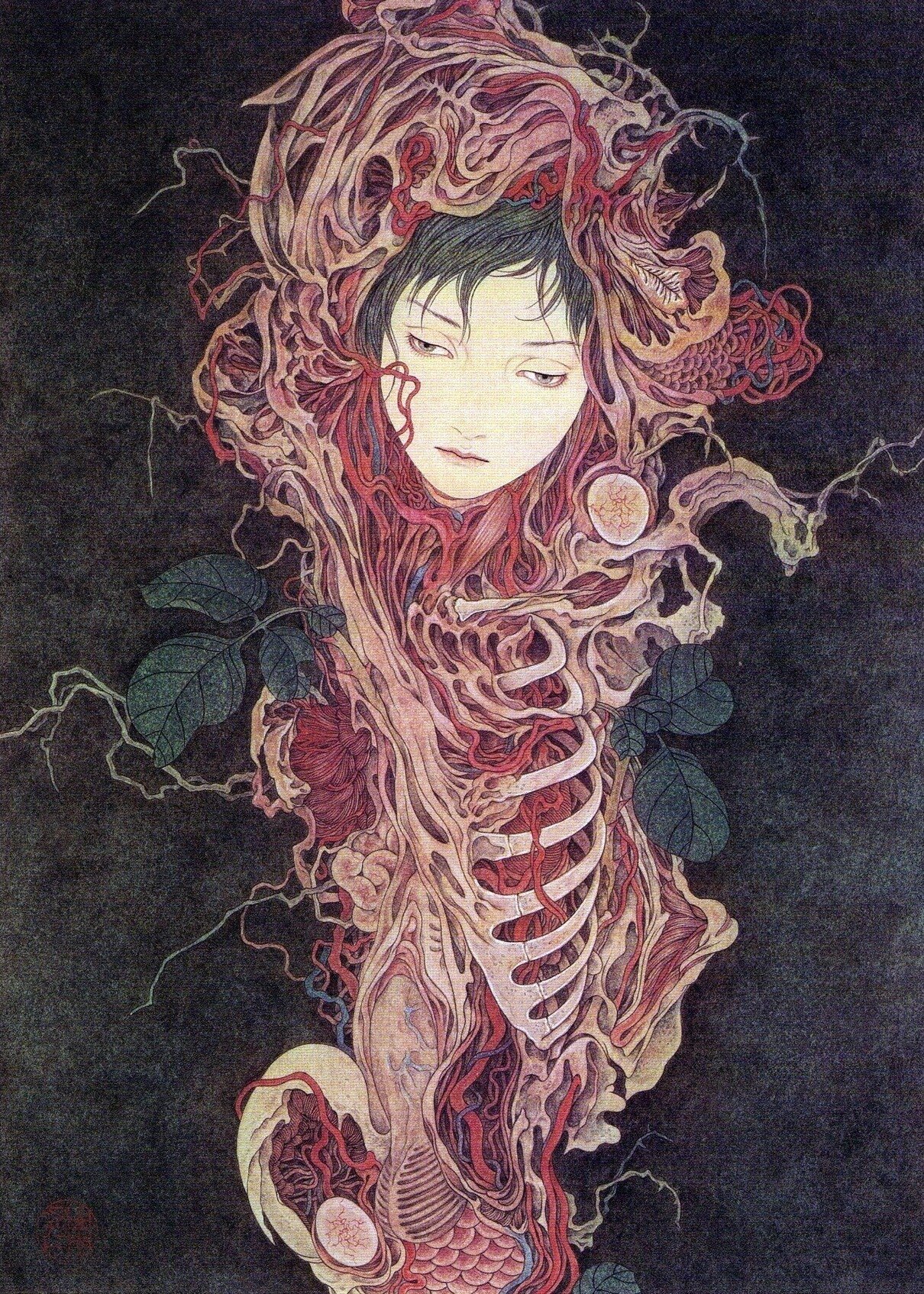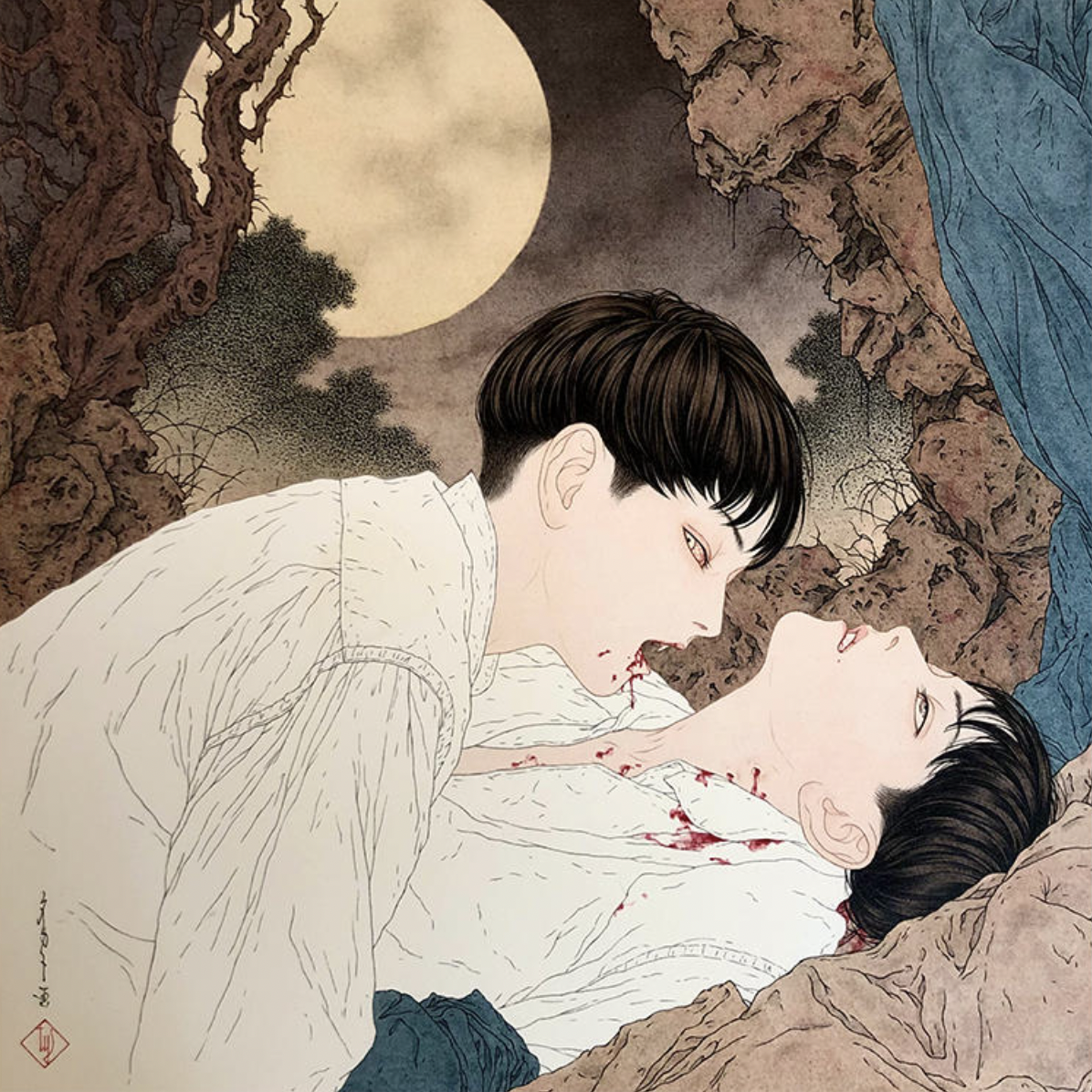Themes: Gender, Sexuality, The Abject, Memento Mori, European Gothic, Ukiyo-e Prints, and Portraiture
![]()
Born in 1960, Yamamoto is a Japanese illustrator and painter who is best known for his style of Heisei Aestheticism which draws upon traditional Ukiyo-e woodblock prints and European gothic aesthetics. His work is ethereally surreal as well as grotesque, most often exploring themes such as death, life, and sexuality. Yamamoto’s body of work is largely focused on portraiture, depicting strikingly beautiful, porcelain-like figures juxtaposed with flowing and abstracted forms of human viscera, eyeballs, and skulls, and often delicate, floral compositions.

Yamamoto, Takato. Deviated Pleasure Horn. 2006, pigment ink on paper.
There is an element of sexuality present throughout his works and most overtly in his series focused on Japanese bondage, although his art is never explicitly sexual. Despite his often grotesque subject matter, his attention to intricate detail and elegant flowing forms focuses more on the beauty of his macabre subject matter rather than feeling voyeuristic.

Yamamto, Takato. Egg. 2006, pigment ink on paper.
Translated writings on Yamamoto are scant and his website's “biography” section simply gives a timeline of his artistic education and exhibitions. All of the Western publications I found discussing Yamamoto’s work overlooked an aspect of his work that stood out to me, his approach to representations of gender and sexuality. Many of Yamamoto’s figures have an element of androgyny to them. His figures coded as male and female often share very similar facial features, and the viewer is left to conclude the figure's gender based on subtle variations in muscle form and body structure. Often the face is the only recognizable feature of the figure, their bodies dissipating into an abstraction of sinew and petals.

Yamamto, Takato. Organic Elasticity . 2008, pigment ink on paper.
This quality of androgyny lends itself to emphasizing the element of queerness present throughout his works, but most notably in his vampire series. Gender-ambiguous vampires embrace and drain the blood of their partners as if they were exchanging a kiss.

Yamamto, Takato. Moonlit Vampire IV. 2023, acrylic on paper.

Yamamto, Takato. Strigoica-Spring Night . 2021, acrylic on paper.
Since the vampire's origins in literature and later in popular culture, the monster has been coded as queer. The concepts of ‘monster’ and ‘homosexual’ share many of the same semantic changes and arouse many of the same fears regarding sex and death. Contemporary critiques of the popular genre of horror point to the idea of the monster as “Other” and representative of racial, sexual, ethnic, political, or ideological minorities. ‘Normality’ on the other hand, constitutes heterosexual patriarchal capitalism. The concept of the vampire then represents the complete subversion of heteronormative ideals and acts as a conduit for the gendered and sexual anxieties of the period in which they exist.
The ethos of Yamamoto’s work embraces this subversion, encapsulated in the transformations of the human figure which bloom delicately with sinew and bone. His figures transverse the boundaries between life and death and the binarity ascribed to gender and sexuality.